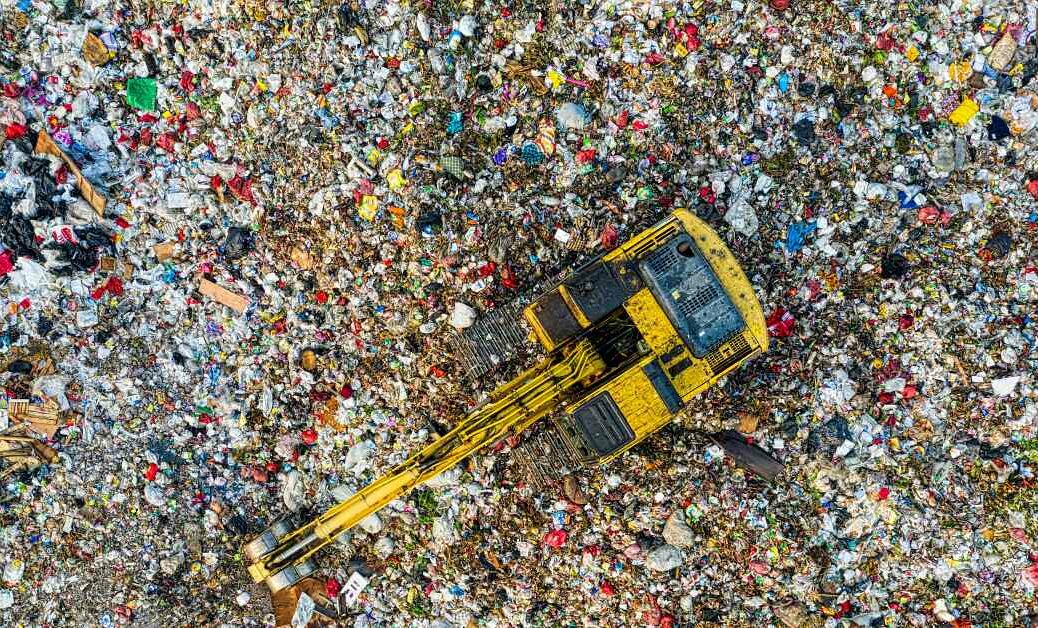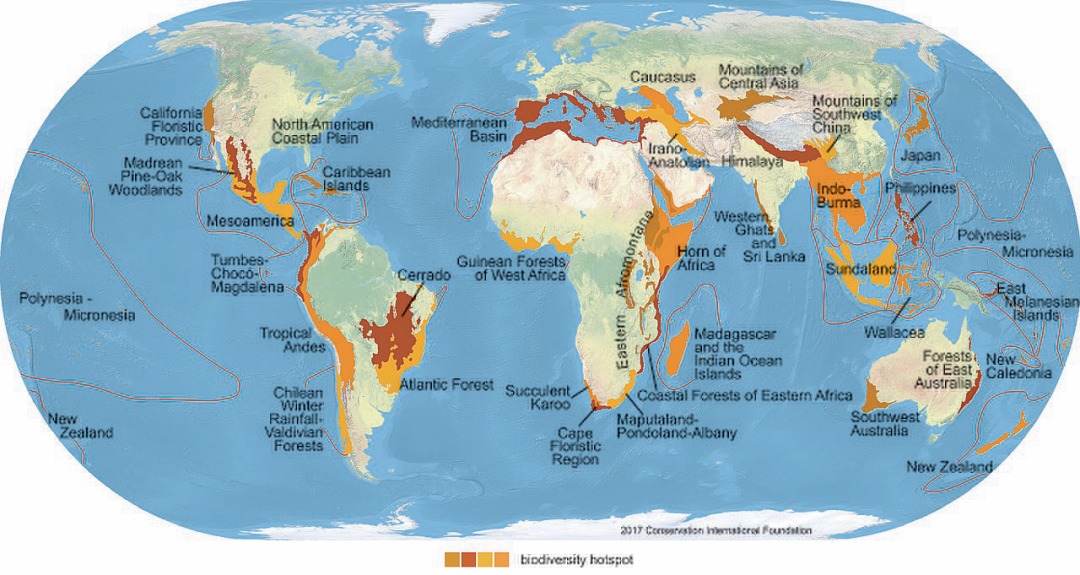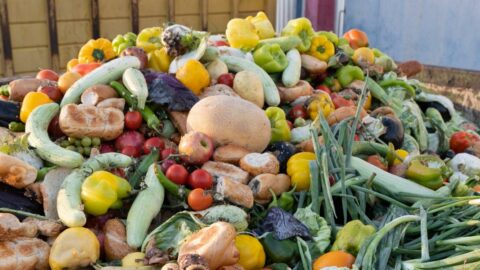Amidst a culture of increasing consumerism and industrial activity, the United States, along with the rest of the world, faces a formidable challenge: managing an ever-growing volume of diverse waste. This crisis spans various categories, including food, plastic, electronic, and more, and its impacts are felt both locally and globally. From cluttering urban landfills to contaminating remote ecosystems and affecting wildlife in far-flung regions, the waste problem is a stark reminder of our interconnectedness with the planet’s health.
The types of waste contributing to this crisis are vast and varied. In the U.S., food waste accounts for a significant portion of the overall waste stream, with a large percentage of the food supply lost or discarded. Plastic waste, notorious for its durability and persistence, is a global pollutant, choking oceans and landscapes and even breaking down into microplastics that enter food chains. E-waste, a modern byproduct of our digital dependency, poses unique environmental and health challenges due to its hazardous components. These, along with other industrial and business waste, contribute not only to local environmental concerns but also to broader issues like climate change.
Startling Facts:
- Globally, over 2 billion tons of municipal solid waste are generated each year, with the U.S. contributing a significant portion.
- The U.S. produces about 292.4 million tons of municipal solid waste annually, which is one of the highest rates per capita globally.
- Nearly 300 million tons of plastic waste is produced worldwide each year, with the U.S. being a major contributor.
- In the U.S., about 30-40% of the food supply is wasted, equating to approximately 133 billion pounds and $161 billion worth of food annually.
- E-waste is the world’s fastest-growing domestic waste stream, and the U.S. is one of the largest producers of e-waste.
Understanding Different Types of Waste
In the U.S., the composition of waste is diverse, encompassing a wide range of materials from various sources, each with its unique environmental impact. Let’s explore these different types of waste, their sources, the raw materials involved, their disposal methods, and their environmental impacts.
Food Waste: Food waste encompasses food that is discarded or uneaten, often due to spoilage or being excess to requirements. This type of waste is primarily generated by households and businesses, especially within the food service industry. The production of this food consumes extensive land, water, and energy resources, making its wastage a significant environmental concern. Not only does it represent a loss of these valuable resources, but when disposed of in landfills, food waste also contributes to greenhouse gas emissions through the production of methane, a potent greenhouse gas.
Electronic Waste (E-Waste): E-waste includes discarded electronic devices such as computers, smartphones, and televisions. Both consumers and businesses contribute to e-waste as technological devices rapidly become obsolete. These devices are made from valuable resources like gold, silver, and rare earth metals, which are obtained through environmentally damaging mining processes. While e-waste is often recycled to recover these valuable materials, improper disposal can lead to hazardous chemicals leaching into the environment.
Plastic Waste: This category includes single-use plastics, packaging materials, and durable plastic goods. Plastic waste is a widespread issue across consumers, businesses, and industries. It is produced from petroleum and natural gas, contributing to fossil fuel depletion and pollution. A significant portion of plastic waste ends up in landfills or the ocean, causing substantial environmental harm, particularly to marine life.
Organic Waste: Comprising biodegradable materials such as yard debris and agricultural residues, organic waste mainly comes from households, agricultural activities, and landscaping. While it involves natural biological matter and thus has lower environmental production costs, its disposal can be problematic. Organic waste is often composted, benefiting soil health, but can also produce methane if disposed of in landfills.
Landfill Waste: A mix of various types of waste, predominantly from households and businesses, landfill waste is a significant problem. It involves the environmental costs of all the waste types it comprises. The accumulation of waste in landfills leads to space issues, methane emissions, and the risk of leachate pollution.
Textile Waste: Mainly generated by consumers and driven by fast fashion trends, textile waste includes discarded clothing and other fabric-based products. These textiles are often made from natural fibers, which require extensive agricultural land and water, or from synthetic materials derived from petroleum. Most textile waste ends up in landfills or is incinerated, with only a small percentage being recycled.
Packaging Waste: This waste type includes excess packaging materials from consumer goods and shipping. Both businesses, in their product packaging, and consumers, in disposing of this packaging, contribute to this waste stream. Packaging waste is made from a variety of materials like paper, plastic, and metal, each carrying its own environmental production cost. While a significant portion is recyclable, much of it still ends up in landfills or as litter.
Paper Waste: Consisting of office paper, newspapers, and packaging materials, paper waste primarily comes from the business sector and households. It is derived from trees, leading to concerns such as deforestation and habitat loss. Paper waste is often recycled, yet it still forms a significant component of landfill waste.
Construction and Demolition Waste: This waste type includes debris from building, renovation, and demolition activities, predominantly generated by the construction industry. It involves a variety of materials, often from non-renewable sources, such as wood, concrete, and metals. While some of this waste can be recycled, a large portion ends up in landfills.
Manufacturing Waste: Generated by various manufacturing industries, manufacturing waste includes scrap and byproducts from industrial processes. The environmental cost is high, encompassing the extraction and processing of raw materials. While often recycled or reused within the industry, some manufacturing waste ends up in landfills.
Each of these waste types presents unique challenges and impacts, underlining the complexity of waste management and the importance of adopting more sustainable practices.
Understanding the nuances of these waste types is vital in addressing the overall waste crisis. Each type presents unique challenges and opportunities for more sustainable management and reduction strategies.
The Scale of Waste: U.S. and Global Perspectives
The scale of waste generation in the United States and globally offers a clear illustration of the environmental challenges confronting us today. Understanding both the volume of waste produced and its global context is crucial to comprehending the scope of this issue and the urgency required to address it.
In the United States, the figures are revealing. The Environmental Protection Agency (EPA) reported that in 2018, the U.S. generated approximately 292.4 million tons of municipal solid waste, averaging about 4.9 pounds per person per day. This waste is composed of a variety of materials including paper, food, yard trimmings, plastics, metals, and glass, with plastics and food waste constituting a significant portion.
Despite efforts to manage this waste, a substantial amount still ends up in landfills or incineration plants. In 2018, out of the total waste generated, only about 69 million tons were recycled and 25 million tons composted, highlighting the challenges in waste recovery and recycling in the U.S.
Globally, the situation mirrors the urgency of the issue. The World Bank estimates that over 2 billion tons of municipal solid waste are generated worldwide annually, a figure expected to rise to 3.4 billion tons by 2050, fueled by urbanization and population growth.
The U.S. stands out in terms of per capita waste production, significantly exceeding the global average. Developed countries like Canada, Australia, and Denmark also contribute considerably to global waste, typically producing more plastic and electronic waste. In contrast, low-income countries tend to generate a higher proportion of organic waste. This disparity between the waste generation of developed and developing nations highlights the disproportionate impact affluent countries have on global waste production.
The increasing trend in waste generation globally underscores the pressing need for effective waste management and reduction strategies. Understanding these dynamics is essential for developing effective environmental policies and strategies for waste management. The current state of waste production not only underlines the challenges we face today but also sets the stage for future discussions on managing waste amidst growing global environmental concerns.
The Impact of Waste on the Environment and Health
Waste, in its many forms, not only clutters our planet but also poses significant risks to ecosystems, wildlife, and human health. Understanding these impacts is crucial for devising effective strategies to mitigate them. Here, we delve into the specific ways waste affects our world, using real-world examples for clarity.
Impact on Ecosystems
Ecosystems, both terrestrial and aquatic, bear the brunt of waste mismanagement. The accumulation and decomposition of waste materials lead to a cascade of environmental issues, affecting everything from soil quality to water purity.
Land Pollution: Landfills, brimming with diverse waste, are a source of soil contamination. Leachate from waste, especially from e-waste, pollutes the soil, affecting plant life and underground water sources.
Water Pollution: Rivers, lakes, and oceans are often the final destinations for various wastes, particularly plastics. This pollution affects aquatic ecosystems and can contaminate human water supplies.
Air Pollution: Burning waste, especially plastics and e-waste, releases harmful pollutants into the air. These emissions contribute to air quality degradation, with implications for both the environment and human health.
Impact on Wildlife
The repercussions of waste extend to wildlife, where the consequences can be direct and often lethal. Animals, both marine and terrestrial, encounter various forms of waste, leading to devastating outcomes.
Marine Life: The marine environment suffers significantly from plastic waste. Sea creatures ingest plastics, mistaking them for food, leading to internal injuries or death, and become entangled in larger pieces of debris.
Terrestrial Animals: On land, waste poses similar threats. Animals can ingest or become trapped in waste, disrupting habitats and natural behaviors.
Impact on Human Health
The impact of waste on human health is both direct and far-reaching. Communities in proximity to waste disposal sites face immediate health risks, while broader populations are indirectly affected through environmental changes.
Direct Exposure: People living near waste disposal sites, especially landfills, face a variety of health risks including respiratory problems from inhaling toxic fumes and waterborne diseases from contaminated water sources.
Indirect Effects: The presence of microplastics in the global food and water supply poses potential health risks to populations far removed from direct waste sources.
Long-term Health Risks: Prolonged exposure to harmful chemicals, often found in e-waste, can lead to serious health issues like neurological disorders and increased cancer risk.
Specific Examples of the Environmental Impact of Waste
Illustrative examples of waste’s impact help to contextualize the issue, showing the tangible consequences of our waste habits.
Plastic in Oceans: The Great Pacific Garbage Patch starkly illustrates the severity of oceanic plastic pollution. This vast expanse of floating debris disrupts marine ecosystems and enters the food chain, impacting both marine life and humans who consume seafood.
Electronic Waste in Landfills: In areas lacking proper e-waste disposal facilities, these materials often end up in landfills. Here, toxic substances like lead and mercury contaminate the soil and water, posing significant environmental and health hazards.
The environmental and health impacts of waste underscore the urgent need for improved waste management and reduction strategies. By comprehensively understanding these impacts, we can better address the challenges posed by the growing global waste crisis.
The Worst Offenders: Countries Contributing Most to the Waste Problem
In the landscape of global waste generation, certain nations stand out for their substantial contributions to the problem. Identifying these countries and understanding the scale of their waste production provides critical insight into the global waste crisis. This section ranks the top waste-producing countries and delves into the factors behind their significant waste outputs.
Ranking of Countries by Waste Production
A handful of countries lead in terms of the sheer volume of waste they produce, each with its own unique set of contributing factors.
United States: At the forefront, the United States is the top producer of waste per capita. The vast amount of waste generated spans various categories, including food, plastic, and e-waste.
China: With its massive population and rapid industrial growth, China is a major contributor to global waste. The country’s swift urbanization and industrialization have led to a marked increase in waste generation.
India and Brazil: As populous nations with burgeoning economies, India and Brazil are significant contributors to the world’s waste, particularly in densely populated urban centers.
Examining the Reasons Behind High Waste Generation
The reasons behind high waste generation in these countries are complex and multifaceted, reflecting a combination of economic, cultural, and infrastructural factors.
Economic Development and Consumerism: In many top waste-producing nations, economic progress has been accompanied by a surge in consumerism. This increase in consumption, associated with higher income levels, typically leads to more waste.
Urbanization: The shift from rural living to urbanization in countries like China and India has transformed lifestyles and consumption habits, contributing to their growing waste problems.
Industrial Activity: Countries with extensive industrial sectors, such as the United States and China, see significant waste production from industrial processes, including manufacturing and construction.
Waste Management Infrastructure: The effectiveness of a country’s waste management infrastructure also impacts the amount of waste generated or reported. Some countries may have less visible waste due to better management systems, whereas others struggle with inadequate infrastructure.
Cultural Factors: Cultural attitudes towards consumption and disposal, such as the prevalence of disposable products, play a role in waste generation. For example, the widespread use of single-use items in the United States is a major contributor to its high levels of waste.
By recognizing these worst offenders in global waste production and analyzing the contributing factors, we gain a clearer picture of the challenges and potential solutions in addressing the waste crisis on a global scale.
Current Waste Management Solutions and Their Effectiveness
The escalating volume of waste has necessitated the development of various waste management strategies. Each approach, from landfills and incineration to recycling, is designed to mitigate the impact of waste on the environment. In this section, we evaluate the methods used to manage waste, discussing their adoption rates, associated issues, and the challenges each method faces.
Landfills
Landfills, the most widely used solution for waste disposal, stand as a testament to our ongoing struggle with waste management. Their prevalence is largely due to their simplicity and lower initial costs compared to other methods. However, landfills bring with them a host of environmental concerns. They are notorious for producing methane, a potent greenhouse gas, and pose the risk of hazardous leachate contaminating groundwater. Managing these sites over the long term presents significant challenges, requiring diligent monitoring and maintenance to mitigate environmental harm.
Recycling
Recycling, aimed at reclaiming waste materials to create new products, is a beacon of environmental sustainability. The effectiveness of recycling programs varies significantly across the globe, with success heavily dependent on robust infrastructure and active community participation. A major hurdle for recycling is contamination; when non-recyclable materials are mixed with recyclables, entire batches can be rendered unusable. The economic viability of recycling is also subject to market forces, with fluctuations in commodity prices impacting profitability. Additionally, the costs involved in collecting, sorting, and reprocessing recyclables often present financial challenges, underscoring the complexity of making recycling a universally viable option.
Incineration
Incineration, a method less common than landfills, involves the combustion of organic materials in waste. This process is particularly prevalent in countries where space is at a premium, such as Japan and Sweden. While incineration effectively reduces waste volume and has the potential to generate energy, it also carries the risk of releasing harmful pollutants into the atmosphere if not managed properly. The economic aspect of incineration is another point of concern. The high capital costs involved in establishing incineration plants can be a significant barrier, and without a system to capture and utilize the energy produced, the process becomes less economically viable. These challenges underscore the need for careful consideration and management in adopting incineration as a waste treatment solution.
Despite the range of waste management strategies in place, their collective effectiveness has room for significant improvement. A substantial gap in the system is highlighted by the vast quantities of waste, particularly plastic, that evade proper disposal and end up polluting natural environments like the oceans.
It is estimated that each year, over eight million tons of plastic waste find their way into the ocean, contributing to an already critical situation. On land, even as landfills continue to amass large amounts of waste, they are approaching their maximum capacities in many regions.
Meanwhile, recycling efforts are not scaling up adequately in response to the growing amount of waste produced, leading to a situation where too many recyclable materials are either being buried in landfills or burned.
The current state of affairs emphasizes the pressing need for an integrated waste management approach. Such an approach would not only improve the efficacy of existing systems but also leverage innovative methods to ensure a larger proportion of the waste stream is effectively captured and repurposed, moving towards a more sustainable management of resources.
The Future & Innovative Approaches to Waste Management
The waste management sector stands on the cusp of revolution, driven by technological innovation and new approaches to reducing and reprocessing waste. From startups to established corporations, entities across the globe are pioneering solutions that could redefine how we think about waste. This section will explore these innovations, highlight success stories that have made a tangible impact, and consider the trends shaping the future of waste management, as predicted by experts in the field.
Spotlight on Cutting-edge Technologies and Methods
Experts predict that the future of waste management will lean heavily on sustainability and resource recovery, with a shift away from landfills towards more circular approaches. They foresee a world where waste is not just a problem to be dealt with, but a resource to be tapped, driving innovation and new industry standards.
Experts are anticipating several trends and technologies that could further advance waste management in the coming years. These new technologies aim to tackle different types of waste more efficiently and with greater environmental consideration.
Advanced Recycling Techniques: Companies like Agilyx and Novoloop are pioneering chemical recycling methods that convert previously non-recyclable plastics into valuable chemicals or fuels, offering a potential solution for plastics traditionally destined for landfills.
Waste-to-Energy Innovations: Firms such as Enerkem are transforming non-recyclable waste into methanol and ethanol, while companies like Covanta are known for their modern waste-to-energy facilities that produce electricity with less environmental impact compared to traditional incinerators.
Smart Waste Management Systems: Startups such as Bigbelly provide solar-powered waste and recycling stations that compact contents and communicate real-time status to collection crews, optimizing collection routes and frequencies.
Robotics and AI in Sorting: Innovations like AMP Robotics are employing artificial intelligence and robotics to sort recyclables more accurately and at a faster rate than human workers.
Biodegradable Materials: The development of new biodegradable materials that can replace plastics is gaining traction, with companies like Biofase developing cutlery and straws from avocado seeds.
Circular Economy Models: There is a growing movement towards circular economy models, where waste is minimized, and materials are kept in use for as long as possible. Companies like TerraCycle are leading the way with their Loop platform, which delivers products in reusable containers that can be returned and refilled.
The trajectory of waste management is clearly heading towards more sustainable and technologically sophisticated solutions. As these new methods and models are adopted globally, the hope is to see a significant reduction in the environmental impact of waste.
Success Stories from Around the World
Around the globe, there are numerous instances where innovative strategies have significantly improved waste management practices.
Sweden’s Waste-to-Energy Success: Sweden stands out as a leader in waste-to-energy conversion, effectively turning its trash into electricity and heat, to the point of importing waste to fuel its facilities.
South Korea’s Food Waste Reduction: South Korea has implemented a nationwide program where food waste is disposed of in biodegradable bags, which are then weighed and the disposal cost is charged to the consumer, resulting in a substantial decrease in food waste.
Zero Waste Movement in Kamikatsu, Japan: The small town of Kamikatsu is noteworthy for its rigorous recycling program, with the community sorting waste into 45 different categories, achieving a recycling rate of over 80%.
The Power of Collective Action
While innovative technologies are pivotal in addressing waste management, the cumulative efforts of businesses, governments, communities, and individuals also play a crucial role. Beyond cutting-edge solutions, everyday actions and policies contribute significantly to tackling the waste crisis. This holistic approach, combining grassroots activism with corporate responsibility and regulatory frameworks, exemplifies the power of collective action in creating sustainable change.
Communities Leading by Example
Communities around the world are taking matters into their own hands, demonstrating that local initiatives can have a profound impact on waste reduction.
Community Recycling Programs: Localized efforts, such as community-led recycling and composting programs, have successfully engaged residents in sustainable waste practices, leading to increased waste diversion rates.
Zero-Waste Communities: Initiatives aiming for zero-waste, such as the one in Capannori, Italy, showcase how communities can significantly reduce their waste footprint through comprehensive strategies involving the reduction, reuse, and recycling of materials.
Businesses Embracing Sustainability
In the business realm, the drive towards sustainability is gaining momentum, with companies of all sizes recognizing the importance of their environmental impact.
Corporate Recycling and Zero-Waste Policies: Major corporations are not only adopting recycling policies but are also aiming for zero waste in their operations, with industry leaders like Google and Toyota at the forefront of these efforts.
Sustainable Packaging Innovations: Consumer goods companies, including Unilever and Coca-Cola, are investing in the development and implementation of sustainable packaging to reduce their environmental footprint and encourage a circular economy.
Governments Implementing Policies and Regulations
Governments are increasingly acknowledging their pivotal role in waste management, implementing policies that can drive significant change.
Single-Use Plastic Bans: National and local governments are combating plastic waste by imposing bans or taxes on single-use plastics, with the European Union and countries like Rwanda leading with stringent regulations.
Waste Diversion Targets and Incentives: Strategic policies in countries such as Japan and South Korea have been successful in diverting waste from landfills, employing both incentives for recycling and penalties for excessive waste generation.
Through the collective actions of different societal sectors, there is a clear pathway to more efficient waste management and environmental preservation. Each group, from individuals in their homes to policymakers in government, contributes to a larger movement towards sustainability, proving that collaborative efforts are essential for meaningful environmental progress.
Practical Tips for Individuals to Reduce Waste
While large-scale initiatives and technological innovations play a crucial role in waste management, the actions of individuals are equally important. Every person has the power to make choices that reduce waste and contribute to a healthier planet. This section provides practical advice for individuals looking to minimize their waste footprint and offers resources for those seeking further information and involvement in waste reduction efforts.
Reducing personal waste is about making mindful choices, from shopping habits to daily routines. Here are some practical steps everyone can take:
Refuse, Reduce, Reuse: Before recycling, consider if you can refuse unnecessary items, reduce consumption, or reuse products. For example, opt for a reusable water bottle instead of buying single-use plastic bottles.
Composting: Composting food scraps and yard waste can significantly reduce the amount of waste sent to landfills and provide nutrient-rich soil for gardens.
Mindful Shopping: Choose products with minimal packaging, buy in bulk, and bring your own bags, containers, and utensils when shopping or eating out.
Product Lifespan: Extend the life of products by repairing and maintaining them. For electronics, consider buying refurbished devices and recycle old ones properly.
Educate and Influence: Share your knowledge with friends and family, and encourage them to make waste-conscious decisions. Community influence can amplify the impact of individual actions.
Conclusion
From the alarming scale of waste generation by top-contributing countries to the innovative technologies reshaping waste management, it’s clear that the issue of waste demands our attention and action. While advancements in technology pave the way for significant progress, the daily decisions of individuals are equally crucial in steering our society toward a more sustainable future.
Moving forward, it is imperative that each of us adopts a proactive and responsible approach to waste management. By embracing the principles of reducing, reusing, and recycling, and supporting policies and initiatives aimed at waste reduction, we can all contribute to a cleaner, healthier environment.
Further Reading About Waste
For those readers who wish to delve deeper into the topic of waste management and the various issues and solutions discussed in this article, the following resources offer a wealth of information:
- Earth911: An extensive recycling database where you can find local recycling solutions.
- Zero Waste Home: A resource for adopting a zero-waste lifestyle with tips and tricks for waste reduction.
- The Story of Stuff Project: Offers information on the impact of consumerism and how to be part of the solution in reducing waste.
- My Plastic-free Life: A blog that offers strategies for reducing plastic waste in daily life.
- Environmental Protection Agency (EPA): The EPA’s website provides extensive resources on waste management practices, recycling programs, and policies in the United States.
- The World Bank – What a Waste 2.0: A global snapshot of solid waste management to 2050. This report offers a comprehensive overview of waste generation, collection, composition, and disposal by country and region.
- United Nations Environment Programme (UNEP): UNEP offers global perspectives on environmental issues, including waste management, and provides resources and reports on sustainable practices.
- The Ellen MacArthur Foundation: As an advocate for the circular economy, the foundation publishes reports and case studies on how a circular approach to business and economics can lead to better waste management outcomes.
Books:
- “The Zero Waste Solution: Untrashing the Planet One Community at a Time“ by Paul Connett: This book provides insights into zero waste strategies and success stories from around the globe.
- “Cradle to Cradle: Remaking the Way We Make Things“ by William McDonough & Michael Braungart: A seminal book that has inspired designers and businesses to create products with the life cycle in mind.
- “Garbology: Our Dirty Love Affair with Trash“ by Edward Humes: This book offers a deep dive into America’s relationship with waste, providing context and analysis of the country’s waste production habits.
- “Waste to Wealth: The Circular Economy Advantage“ by Peter Lacy & Jakob Rutqvist: The authors explore how businesses can capitalize on the circular economy to turn waste into wealth.
* As an Amazon Associate, Republic of Green earns from qualifying purchases.
- 30 Environmental Activities to Feed Your Mind, Body & Soul - December 19, 2023
- Exploring the Wonders of Dark Sky Parks: A Stargazer’s Paradise - December 19, 2023
- Biodiversity Loss – A Crisis in the Making - December 12, 2023










